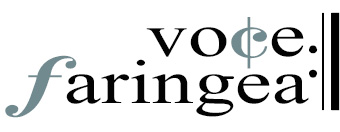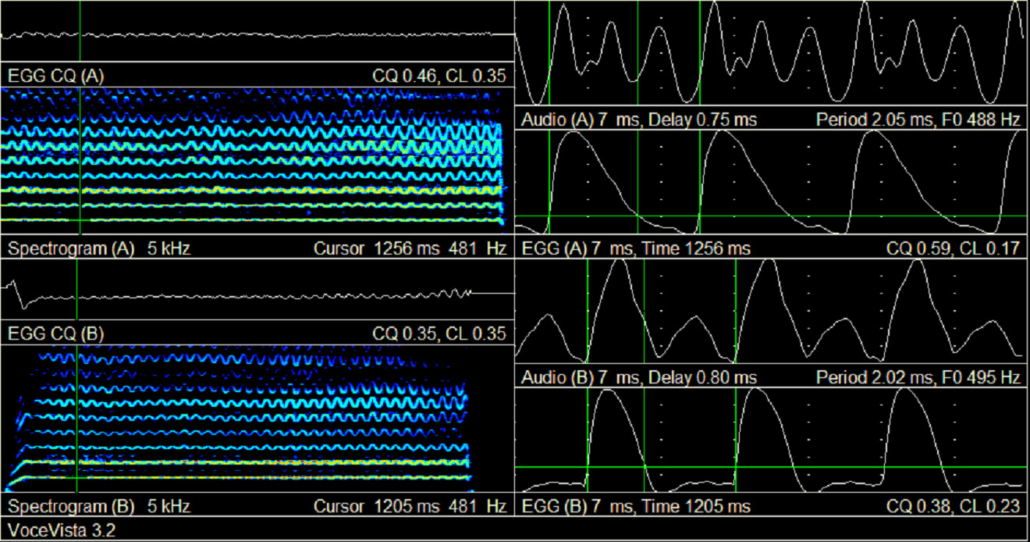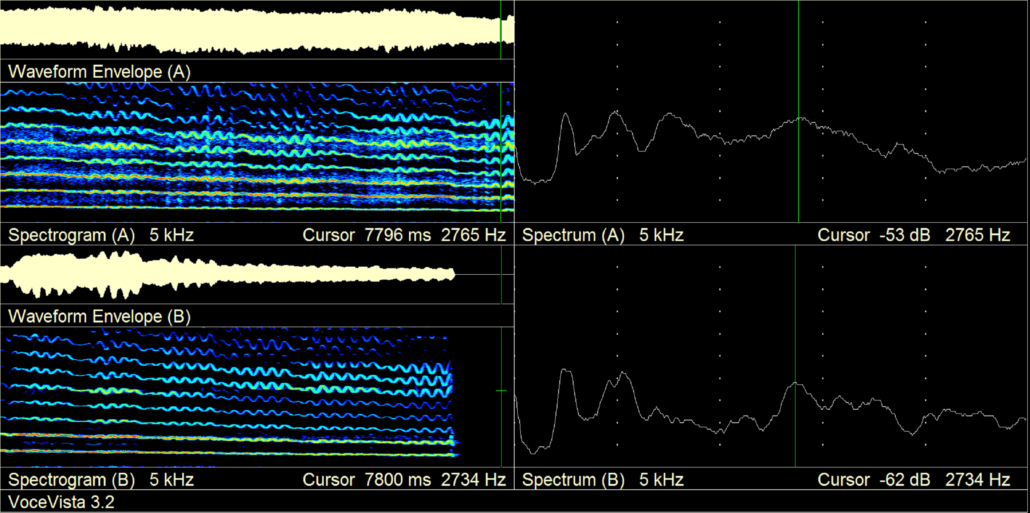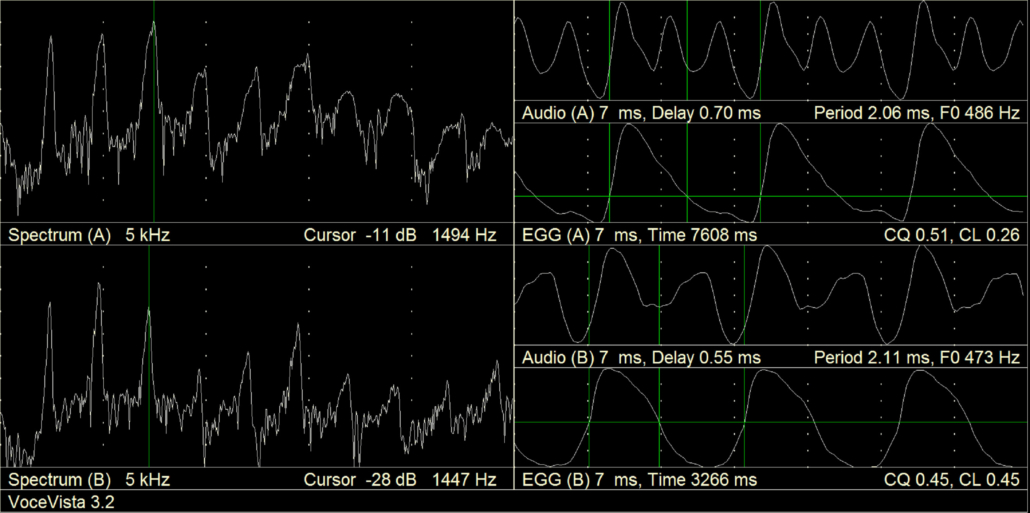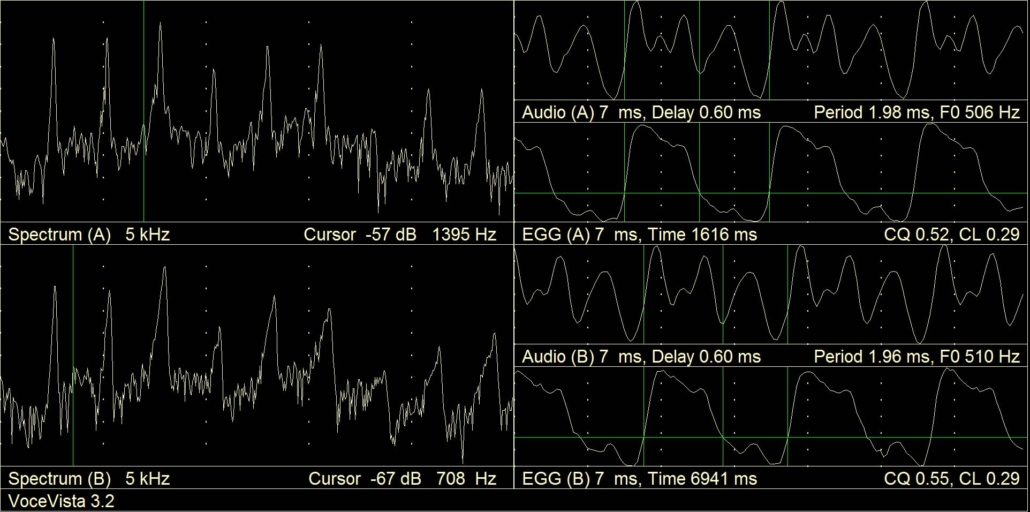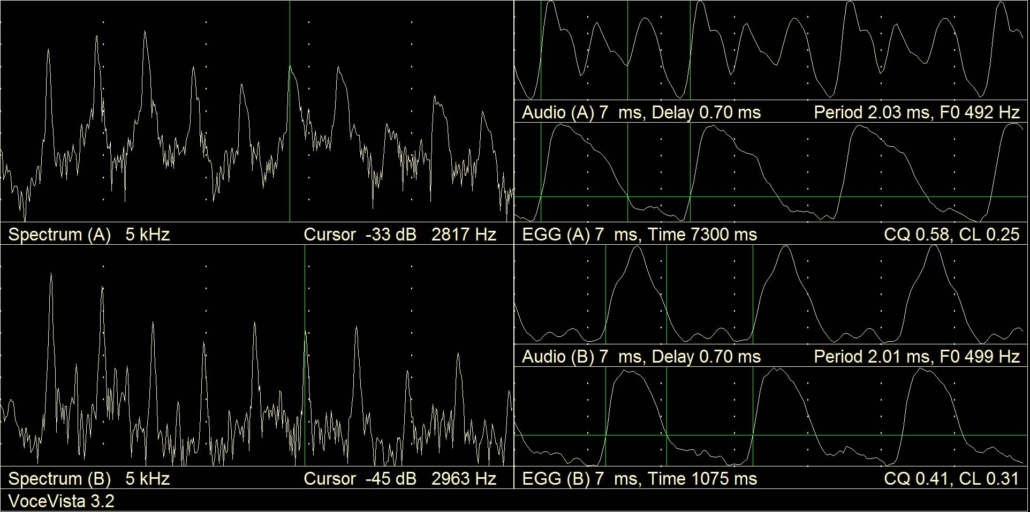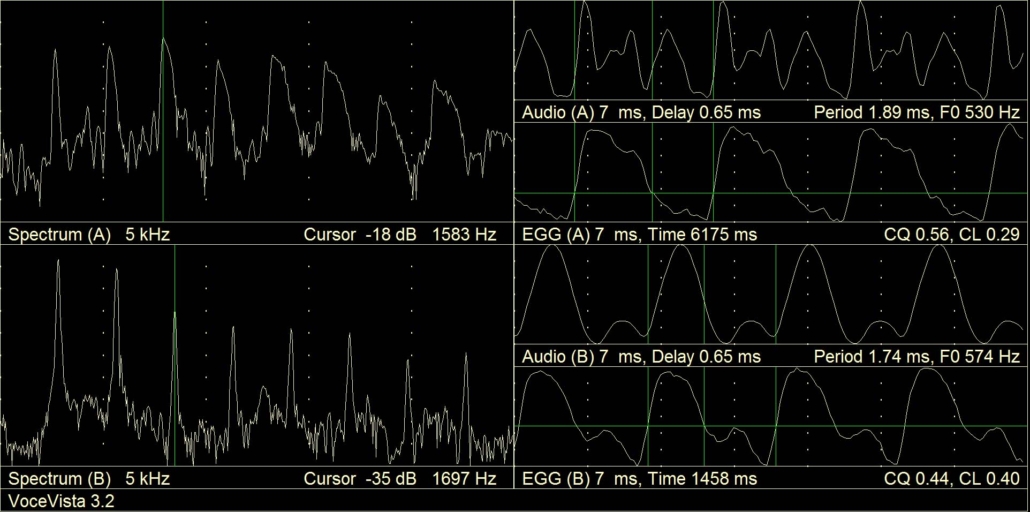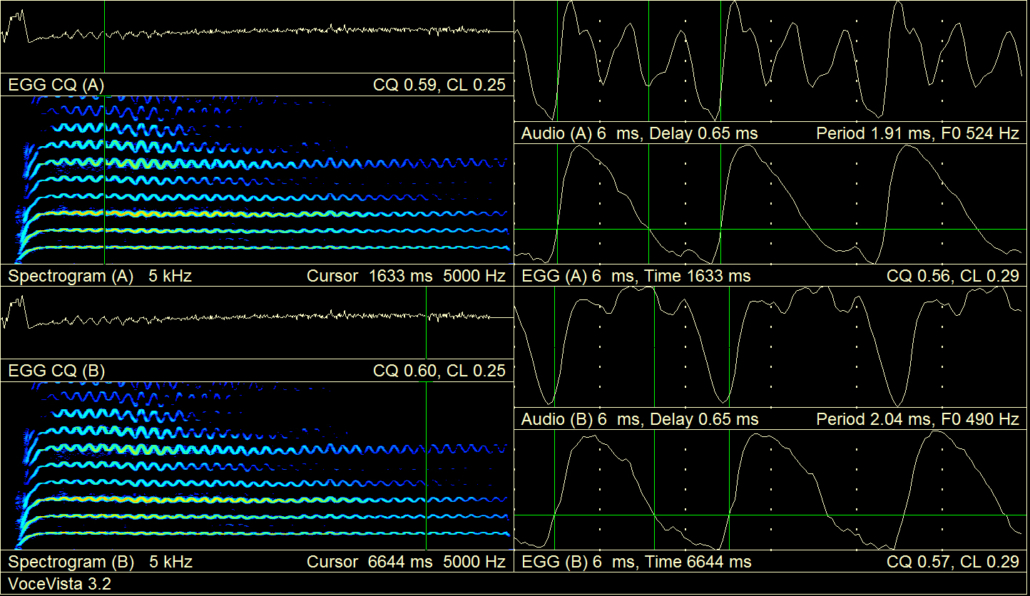Analysis of the Voce faringea and other register mechanisms using VoceVista, including audio samples of the illustrations in the dissertation – for more information, see the scientific study “Investigating Voce Faringea with the Voce Vista Pro System”.
Fig. 5 in the study (Fig. 44 in the thesis), comparison: Voce faringea – countertenor falsetto
Spectrogram (left), audio signal und EGG signal (right) of the Voce faringea (top) and the falsetto register (below).
Fig. 8 (Fig. 47 in the thesis), LTAS of Voce faringea and countertenor falsetto
Long term everage spectrum (LTAS) of a musical line in Voce faringea (top) and falsetto (below).
Fig. 10 (Fig 49 in the thesis), Comparison of Mezza voce and Voce faringea
Power spectrum and EGG of a tone (Bflat4) in falsetto-dominant register mix: Voce faringea (top) and in modal-dominant mix: Mezza Voce (below).
More EGG and audio samples showing the differences between countertenor falsetto and Voce faringea:
Voce faringea – EGG wave form showing a very clear knee:
Power spectra with the indicated regions of formants 1 and 2 (left) and EGG signal curves with pronounced knee form (right).
Transition from countertenor falsetto (below) to Voce faringea (top) – pitch: B4
Significant differences of the EGG wave form and the volume in the frequency range of the singers formant cluster:
Transition from countertenor falsetto (below) to Voce faringea (top) – pitch: C#5
Significant differences of the EGG wave form and the volume of H3:
Diminuendo in voce faringea – pitch: B4
knee in the EGG wave form stays relatively stable even in pianissimo as the Qclosed:
